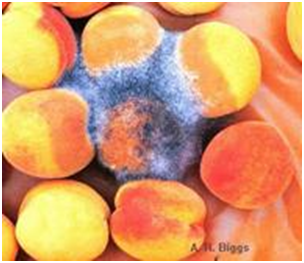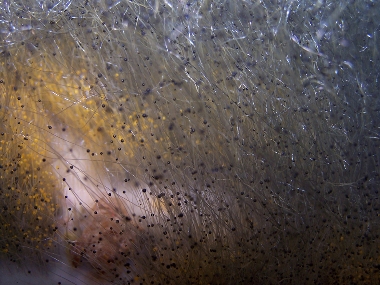Food is comfort!
 Rhizopus stolonifer is considered to be saprophytic because it
feeds on dead, damp, and decaying matter, such as soil. It is a heterotrophic
organism that obtains nutrients by absorption. Rhizopus stolonifer
is also considered to be parasitic because it obtains nutrients from living
organisms, causing the food to rot. It secretes digestive juices, that
contain enzymes, directly on the food. These enzymes cause the food to
become soluble, which it is then absorbed by the mold. The mold spreads over
the surface of the substrate, sending its hyphae inward to absorb the nutrients.
Sugar and starch are favored by the mold, so while growing on bread, the
mold takes up nutrition from the carbohydrate compounds of the bread. Due to
being a member of the kingdom Fungi, Rhizopus stolonifer stores many
nutrients that it takes in as glycogen.
Rhizopus stolonifer is considered to be saprophytic because it
feeds on dead, damp, and decaying matter, such as soil. It is a heterotrophic
organism that obtains nutrients by absorption. Rhizopus stolonifer
is also considered to be parasitic because it obtains nutrients from living
organisms, causing the food to rot. It secretes digestive juices, that
contain enzymes, directly on the food. These enzymes cause the food to
become soluble, which it is then absorbed by the mold. The mold spreads over
the surface of the substrate, sending its hyphae inward to absorb the nutrients.
Sugar and starch are favored by the mold, so while growing on bread, the
mold takes up nutrition from the carbohydrate compounds of the bread. Due to
being a member of the kingdom Fungi, Rhizopus stolonifer stores many
nutrients that it takes in as glycogen.
Nutrition is important for Rhizopus stolonifer to grow and this mold uses these nutrients to reproduce.
To learn about another organism that can be found on fruit, specifically in the skins of grapes, please go to Saccharomyces cerevisiae. In addition, if you would like to read about another decomposer of decaying material, please visit Cyathus striatus.
